
- Gaudí's Vision: The Architectural Marvel of Sagrada Familia
- The Historical Significance of Sagrada Familia in Barcelona
- Exploring the Unique Features of Gaudí's Sagrada Familia
- Sagrada Familia: A Testament to Modernista Architecture
- Visiting Sagrada Familia: Tips for an Unforgettable Experience
- The Ongoing Construction of Sagrada Familia: A Work in Progress
Antoni Gaudí's masterpiece, the Sagrada Familia, stands as a testament to the innovative spirit of modernist architecture. This iconic basilica, still under construction, features intricate designs and a unique blend of Gothic and Art Nouveau styles that captivate visitors from around the world.
Recognized as one of the most important landmarks in Barcelona, Gaudí's Sagrada Familia: Barcelona's Historic Landmark embodies the rich cultural heritage of the city. Its towering spires and breathtaking façades tell a story of devotion and artistry that continues to inspire generations.
Gaudí's Vision: The Architectural Marvel of Sagrada Familia
Gaudí's vision for the Sagrada Familia was profoundly influenced by his deep spiritual beliefs and his love for nature. He aimed to create a space that transcended traditional architectural boundaries, blending natural forms and symbols into a harmonious structure. This approach reflects his desire to connect the divine with the organic, making the basilica not just a building, but a living entity.
Central to Gaudí's design are the unique geometric shapes and vibrant colors that characterize the Sagrada Familia. He utilized hyperboloids, paraboloids, and other complex forms to achieve structural integrity while maintaining an aesthetic beauty. This innovative use of geometry allows the basilica to resonate with light and shadow, enhancing its ethereal atmosphere.
The Sagrada Familia is also a reflection of Gaudí's commitment to craftsmanship. He believed in the importance of traditional techniques and handwork, which is evident in the intricate details of the sculptures and façades. These elements serve not only as decorative features but also as storytelling devices, imparting biblical narratives and allegorical meanings to the viewers.
- Construction Timeline: Started in 1882, expected completion in 2026.
- Architectural Styles: A fusion of Gothic and Art Nouveau.
- Height: Once completed, it will reach 172.5 meters, making it the tallest church in the world.
The Historical Significance of Sagrada Familia in Barcelona
The historical significance of the Sagrada Familia extends beyond its architectural brilliance. As a symbol of Barcelona's identity, it reflects the city's rich cultural and religious history. The basilica serves as a gathering place for both locals and tourists, making it a focal point of community engagement and spiritual reflection.
Moreover, the Sagrada Familia is a testament to innovation in construction. Its ongoing development, funded primarily through private donations, illustrates the dedication of generations to bring Gaudí's vision to life. This approach highlights the evolving nature of the basilica, symbolizing both the past and the future of Barcelona's architectural landscape.
The basilica also plays a crucial role in promoting tourism in Barcelona. It attracts millions of visitors each year, contributing significantly to the local economy. The Sagrada Familia is frequently listed among the top tourist attractions globally, enhancing the city's profile as a cultural capital.
- Cultural Impact: The site has become a symbol of Catalan nationalism and pride.
- Artistic Influence: Gaudí's work has inspired countless architects and artists worldwide.
- UNESCO World Heritage Site: Designated in 2005, recognizing its universal cultural value.
Exploring the Unique Features of Gaudí's Sagrada Familia
The Sagrada Familia showcases a myriad of unique features that reflect Antoni Gaudí's innovative architectural approach. One of the most striking elements is the use of natural motifs, which are evident in the basilica's organic shapes and forms. Gaudí’s inspiration from nature is not only aesthetic but also functional, contributing to the structural stability of the building.
Another remarkable characteristic is the basilica's façade, which is divided into three distinct parts: the Nativity Facade, the Passion Facade, and the Glory Facade. Each of these façades tells a different story and is intricately decorated with sculptures that depict various biblical narratives. This storytelling aspect engages visitors and invites them to explore the deeper meaning behind the artwork.
- Nativity Facade: Represents the birth of Christ with vibrant, detailed sculptures.
- Passion Facade: Portrays the suffering of Christ with stark, angular forms that evoke deep emotion.
- Glory Facade: Symbolizes the resurrection and the glory of God, featuring a more dynamic and upward-reaching design.
The interior of the Sagrada Familia is equally captivating, featuring tree-like columns that branch out to support the ceiling. This design creates a forest-like atmosphere, enhancing the spiritual experience of visitors. The clever use of light is another unique aspect, with stained glass windows filtering sunlight into a spectrum of colors, further enriching the ambiance within the basilica.
Sagrada Familia: A Testament to Modernista Architecture
The Sagrada Familia is not just a church; it is a monument to the Modernista movement that revolutionized architecture in the late 19th and early 20th centuries. Gaudí employed a distinct style characterized by fluid lines and organic forms, which set his work apart from traditional architectural conventions. His approach emphasized harmony with nature, infusing the structure with a sense of vitality and motion.
One of the most fascinating aspects of the Sagrada Familia is its adaptation of natural elements into architectural design. Gaudí’s profound respect for the environment allowed him to mimic natural structures, resulting in a seamless integration of the building with its surroundings. This philosophy is evident in many features, such as the columns that resemble tree trunks and the intricate patterns that reflect the flora of the region.
The use of innovative materials and techniques also showcases Gaudí's forward-thinking vision. He incorporated locally sourced stone and experimented with structural techniques that were groundbreaking for his time, allowing for unprecedented heights and forms. This ability to blend tradition with innovation speaks to the enduring legacy of the Sagrada Familia as a pivotal example of modernist architecture.
- Symbolic Representation: Each element of the basilica symbolizes various aspects of Christianity, making it an artistic representation of faith.
- Work in Progress: With construction still ongoing, the basilica reflects the evolving nature of architecture and the collaboration of numerous artisans and architects drawn to Gaudí’s original vision.
- Global Influence: The techniques and philosophy behind the Sagrada Familia have inspired a new generation of architects worldwide, making it a beacon of creativity and innovation.
Visiting Sagrada Familia: Tips for an Unforgettable Experience
When planning a visit to the Sagrada Familia, consider purchasing your tickets online in advance to avoid long queues. This will not only save you time but also ensure you secure your desired entry time. Additionally, opt for a guided tour to gain deeper insights into Gaudí's vision and the historical significance of the basilica, enhancing your overall experience.
For the best views and photo opportunities, try to visit either early in the morning or late in the afternoon. The golden hour creates a magical atmosphere, highlighting the intricate details of the façades. Don’t forget to explore the interior, where the interplay of light and color from stained glass windows offers a breathtaking experience that captures the essence of Gaudí's artistry.
- Dress Code: As a place of worship, it's advisable to dress modestly when visiting.
- Audio Guides: Consider renting an audio guide to enrich your understanding of the various architectural elements and their meanings.
- Accessibility: The site is equipped with facilities for visitors with reduced mobility, ensuring everyone can enjoy this architectural marvel.
Lastly, take time to stroll around the park adjacent to the Sagrada Familia. This area provides a serene escape and allows you to appreciate the basilica from different angles. Engaging with the local atmosphere and enjoying a meal at nearby cafés can round off your visit, making it a truly unforgettable experience in Barcelona.
The Ongoing Construction of Sagrada Familia: A Work in Progress
The ongoing construction of the Sagrada Familia is a remarkable journey that reflects the enduring commitment to Gaudí's vision. While initiated in 1882, this monumental project has faced numerous challenges over the years, including funding shortages and the impacts of historical events. Today, the construction is nearing its completion, with an expected finish date in 2026, coinciding with the centenary of Gaudí's death, making this milestone particularly significant.
One of the keys to the basilica's ongoing construction is the use of modern technology, which has revolutionized the way artisans approach Gaudí's intricate designs. Advanced computer modeling and cutting-edge machinery enable precise replication of the original plans, ensuring that every detail remains true to Gaudí's artistic intent. This fusion of traditional craftsmanship and modern engineering exemplifies the evolution of architectural practice in response to contemporary needs.
Moreover, the Sagrada Familia continues to be a symbol of collaboration among architects and craftsmen from around the world. Each artisan brings unique skills that enrich the project's overall design. This communal effort not only underscores the basilica's architectural significance but also highlights its role as a cultural phenomenon that unites people in the shared goal of realizing Gaudí's dream.
- Current Status: Over 70% of the basilica is completed, with ongoing work focusing on the towers and facades.
- Funding: Primarily financed through ticket sales and private donations, reflecting public interest and support.
- Future Plans: The focus is on finishing the main towers, which will enhance the basilica's skyline and overall grandeur.
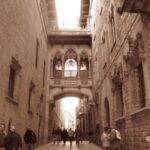 Explore the Gothic Quarter on a Guided Tour
Explore the Gothic Quarter on a Guided Tour Barcelona Airport to Sagrada Familia: Ways to Get There
Barcelona Airport to Sagrada Familia: Ways to Get There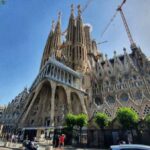 The Fascinating History of Barcelona's Sagrada Familia: A Brief Overview
The Fascinating History of Barcelona's Sagrada Familia: A Brief OverviewIf you want to know other articles similar to Gaudí's Sagrada Familia: Barcelona's Historic Landmark you can visit the category Sagrada Familia.
Deja una respuesta

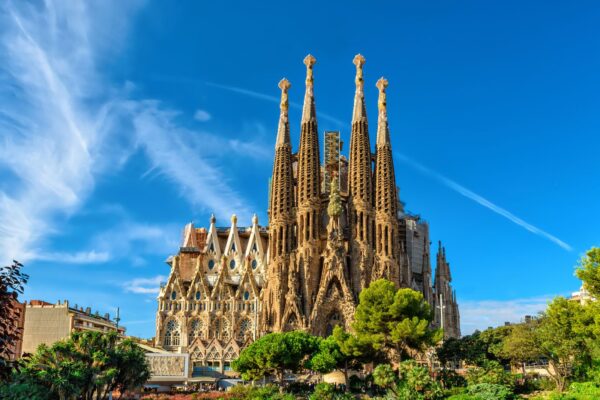
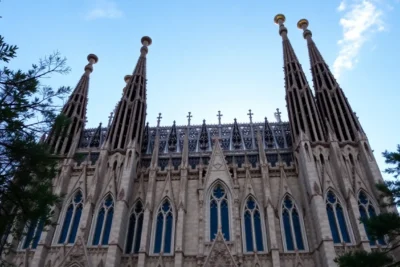
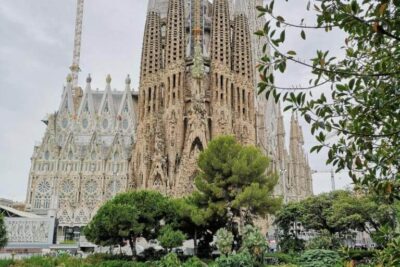
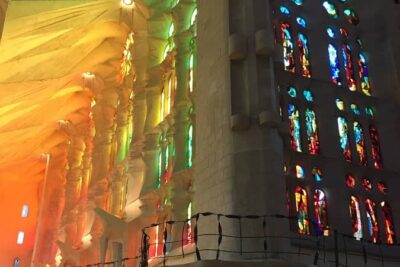
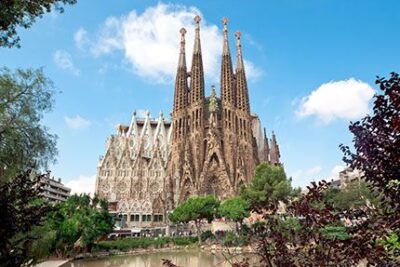
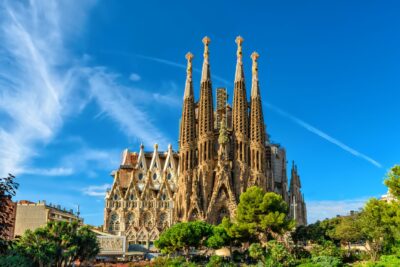
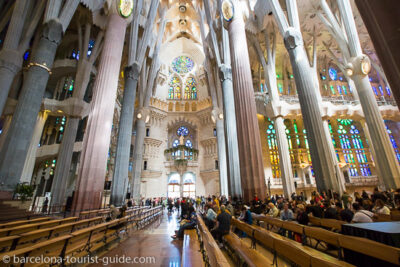
Read more!